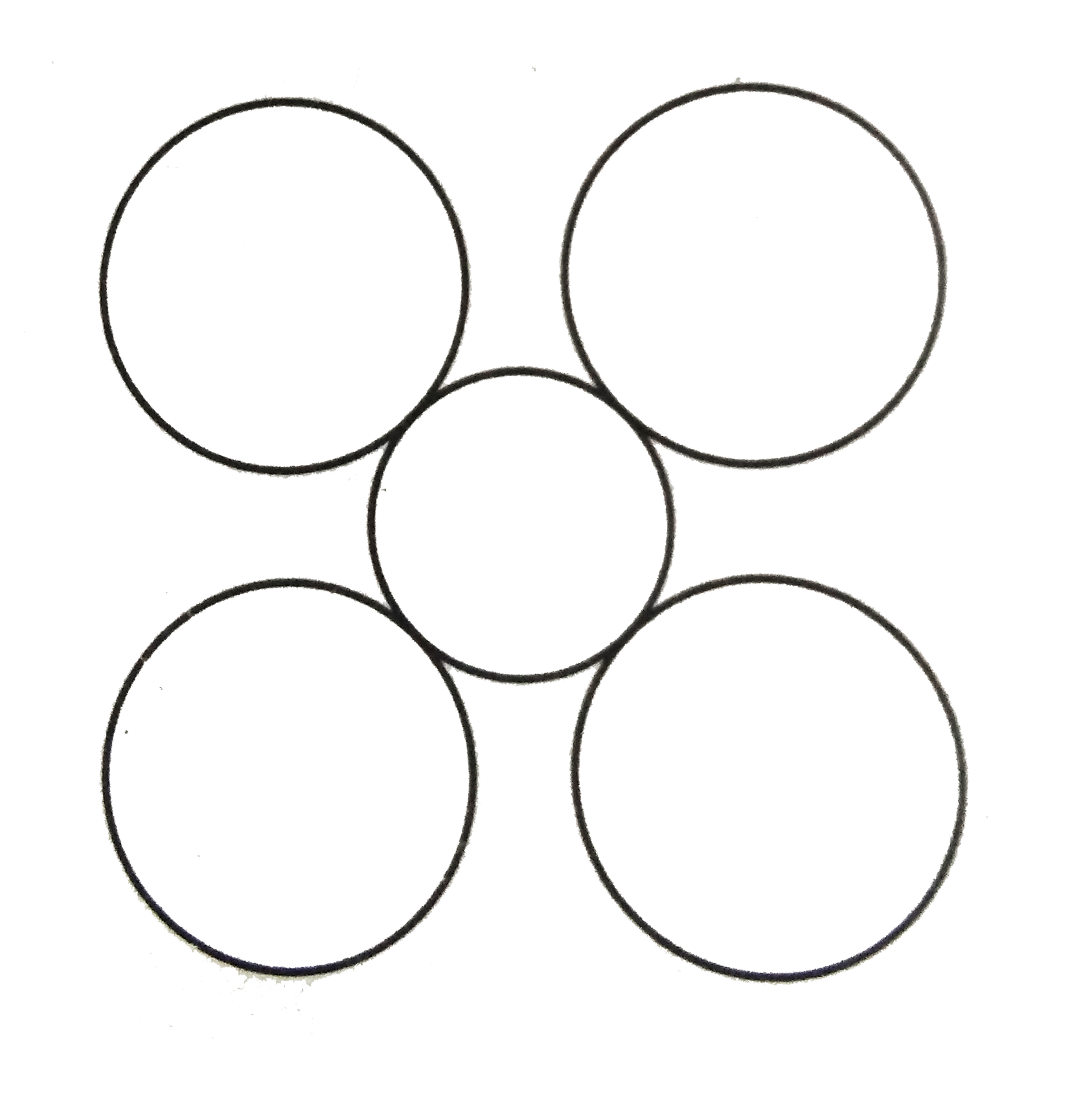Complete Solutions to Exercises (Linked Comprehension) of chapter SOLID STATE of Class 12 book with complete answers and questions
| Class 12 | CHEMISTRY |
| Chapter | SOLID STATE |
| CENGAGE CHEMISTRY | Exercises (Linked Comprehension) |
| Number Of Questions | 13 |
| Academic Year | 2023-24 |
If calcium crystallizes in `bc c` arrangement and the radius of `Ca` atom is `96 pm`, then the volume of unit cell of `Ca` is
02:02View SolutionThe number of unit cells in the `Ca` atom lies on the surface of a cubic crystal that is `1.0 cm` in length is
02:18View SolutionThe fraction of `Ca` atoms that lies on the surface of a cubic crystal that is `1.0 cm` in length is
05:41View SolutionThe `"OLIVINE"` series of minerals consists of crystal in which `Fe^(2+)` and `Mg^(2+)` ions may substitute for each other causing susbstitutional impurity defects without changing the volume of unit cell. In `"OLIVINE"` series of minerals, `O^(2-)` ions exist as fcc with `Si^(4+)` occupying one-fourth of `OVs` and divalent metal ions occupying one-fourth of `OVs` and divalent metal ions occupying one-fourth of `TVs`. The density of "forsterite" (magnesium silicate) is `3.21 g cm^(-3)` land that of "fayalite" (ferrous silicate) is `4.34 g cm^(-3)`.
The formula of "fayalite mineral" is03:59View SolutionThe `"OLIVINE"` series of minerals consists of crystal in which `Fe^(2+)` and `Mg^(2+)` ions may substitute for each other causing susbstitutional impurity defects without changing the volume of unit cell. In `"OLIVINE"` series of minerals, `O^(2-)` ions exist as fcc with `Si^(4+)` occupying one-fourth of `OVs` and divalent metal ions occupying one-fourth of `OVs` and divalent metal ions occupying one-fourth of `TVs`. The density of "forsterite" (magnesium silicate) is `3.21 g cm^(-3)` land that of "fayalite" (ferrous silicate) is `4.34 g cm^(-3)`.
If in "forsterite mineral" bivalent `Mg^(2+)` ions are to be replaced by unipositive `Na^(o+)` ions, and if `Na^(o+)` ions are occupying half of `TV_(s)` in`fcc` lattice, the arrangement of rest of the constituents is kept same, then the formula of the new solid is:03:06View Solution`AX,AY,BX`, and `BY` have rock salt type structure with following internuclear distances:
`|{:("Salt","Anion-anion","Cation-anion"),(,"distance in"Å,"distance in"Å),(AX,2.40,1.70),(AY,1.63,1.15),(BX,2.66,1.88),(By,2.09,1.48):}|`
Ionic radii of `A^(o+)` and `B^(o+)`, respectively, are03:24View Solution`AX,AY,BX`, and `BY` have rock salt type structure with following internuclear distances:
`|{:("Salt","Anion-anion","Cation-anion"),(,"distance in"Å,"distance in"Å),(AX,2.40,1.70),(AY,1.63,1.15),(BX,2.66,1.88),(By,2.09,1.48):}|`
Ionic radii of `X^(o+)` and `Y^(Θ)`, respectively, are02:54View Solution`AX,AY,BX`, and `BY` have rock salt type structure with following internuclear distances:
`|{:("Salt","Anion-anion","Cation-anion"),(,"distance in"Å,"distance in"Å),(AX,2.40,1.70),(AY,1.63,1.15),(BX,2.66,1.88),(By,2.09,1.48):}|`
The structure given below is of
 03:26View Solution
03:26View Solution`AX,AY,BX`, and `BY` have rock salt type structure with following internuclear distances:
`|{:("Salt","Anion-anion","Cation-anion"),(,"distance in"Å,"distance in"Å),(AX,2.40,1.70),(AY,1.63,1.15),(BX,2.66,1.88),(By,2.09,1.48):}|`
Which of the following structure is, respectively, by `Ax`?
 01:28View Solution
01:28View Solution`AX,AY,BX`, and `BY` have rock salt type structure with following internuclear distances:
`|{:("Salt","Anion-anion","Cation-anion"),(,"distance in"Å,"distance in"Å),(AX,2.40,1.70),(AY,1.63,1.15),(BX,2.66,1.88),(By,2.09,1.48):}|`
A salt `MY` crystallizes in the `CsCl` structure. The anions at the corners touch each other and cation is in the centre. The radius ratio `(r_(o+)//r_(Θ))` for this structure is02:50View SolutionIn a unit cell, atoms `(A)` are present at all corner lattices, `(B)` are present at alternate faces and all edge centres. Atoms `(C)` are present at face centres left from `(B)` and one at each body diagonal at disntance of `1//4th` of body diagonal from corner.
Formula of given solid is02:14View SolutionIn a unit cell, atoms `(A)` are present at all corner lattices, `(B)` are present at alternate faces and all edge centres. Atoms `(C)` are present at face centres left from `(B)` and one at each body diagonal at disntance of `1//4th` of body diagonal from corner.
A tetrad axis is passed from the given unit cell and all the atoms touching the axis are removed. The possible formula of the compound left is03:08View SolutionIn a unit cell, atoms `(A)` are present at all corner lattices, `(B)` are present at alternate faces and all edge centres. Atoms `(C)` are present at face centres left from `(B)` and one at each body diagonal at disntance of `1//4th` of body diagonal from corner.
Total fraction of voids occupied are01:56View Solution
Exercises (Linked Comprehension) questions and complete solutions for chapter SOLID STATE of CENGAGE CHEMISTRY (HINGLISH) of Class 12
All Exercises from CENGAGE CHEMISTRY Class 12 CHEMISTRY SOLID STATE
- Ex 1.1 (Objective)
- Ex 1.1 (Subjective)
- Ex 1.2 (Objective)
- Ex 1.2 (Subjective)
- Exercises (Archives ) Assertion-Reasoning
- Exercises (Archives ) Interger
- Exercises (Archives ) Linked Comprehension
- Exercises (Archives ) Multiple Correct
- Exercises (Archives ) Single Correct
- Exercises (Archives ) Subjective
- Exercises (Assertion-Reasoning)
- Exercises (Fill In The Blanks)
- Exercises (Interger)
- Exercises (Linked Comprehension)
- Exercises (Multiple Correct)
- Exercises (Single Correct)
- Exercises (True/False)
- Illustration
- Solved Examples
